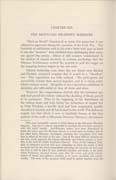
[p. 410]
CHAPTER XIX
THE MOUNTAIN MEADOWS MASSACRE
"Shed no blood!" Paradoxical as seems this injunction it was adhered to rigorously during the operation of the Utah War. The hundreds of militiamen, sent to the active front with guns in hand to stay the "invasion," were inhibited from discharging these weapons against the enemy. Always it will occasion wonderment to the student of human reactions in wartime psychology that the Mormon frontiersmen resisted the impulse to pull the trigger on the tempting human targets in the war zone.
Church leadership, even when the war clouds were thickest and blackest, remained sanguine that it would be a "bloodless" war. This expectation was fully realized. The participants did successfully restrain their natural impulses, and in so doing established a unique record. Altogether it was a marvelous exhibition of discipline and self-control in time of storm and stress.
However, the congratulatory attitude that the turbulent episode had passed into history without the shedding of blood, proved to be premature. Prior to the beginning of the disturbance on the eastern front, and even before the declaration of martial law in Utah Territory, a terrible deed had been perpetrated, quickly shrouded in mystery and all but hushed to the world. The darksome tragedy was that which is now so familiarly known in the four quarters of the earth as Mountain Meadows Massacre,1 the heinous
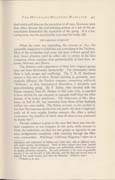
[p. 411]
deed which well deserves the execration of all men, Mormons more than other, because the soul-sickening actions of a few of the denomination besmirched the reputation of the group. It is a harrowing story, but the ascertainable facts must be briefly told.
THE ARKANSAS COMPANY
When the crisis was impending, the summer of 1857, the seasonable emigration to California was converging in the Territory. Most of the overlanders had come and gone without special incident, hence attention need be called only to certain of the later companies whose members were predominantly at least from Arkansas, Missouri, and Illinois.
The character and composition of these later migrant groups have not been determined satisfactorily. The information about them is both meager and conflicting. The T. B. H. Stenhouse version is that two of these, though traveling in proximity, were markedly different, the Fancher company, comprising well-to-do "Wildcats," as they denominated themselves, a disorderly and peace-disturbing group. Eli P. Kelsey, who traveled with the former company from Ft. Bridger to Salt Lake City, is reported to have advised the one company to segregate itself from the other because of its lawless proclivities. The statements of Mrs. Stenhouse, in Tell It All, vary somewhat from those of her husband, written two years earlier. The Kelsey account, as she recalled it, was that "the train was divided into two parts—the first a rough-and-ready set of men—regular frontier pioneers; the other a picked community, the members of which were all more or less connected by family ties.")
Though credence is given to the view that there were two distinct companies, or one company in two parts, while enroute to Utah, the indications are that the two groups or segments of one were amalgamated completely while traveling through the Mormon communities. Hutchings' California Magazine,2 refers to it
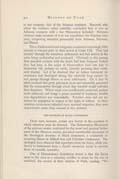
[p. 412]
as one company, that of the Arkansas wayfarers. Bancroft, who sifted the evidence rather carefully, concluded that it was an Arkansas company with a few Missourians included. Mormon citations make mention of it as one expedition, the Fancher company, comprising members presumably from Arkansas, Missouri, and Illinois.
These California-bound emigrants occasioned surprisingly little interest or concern prior to their arrival at Cedar City. They had traveled through the numerous settlements and had arrived at the outer fringe undisturbed and uninjured. Obviously in this passage their peaceful contacts with the Saints had been frequent. Indeed they had been in the midst of Mormondom from late July to September 7th, perhaps six weeks, leisurely pursuing their south-west journey. Let it be observed that no serious untoward circumstance had developed during this relatively long sojourn by and passage through fifteen or more settlements. Yet it may be safely assumed that petty grievances arose and reasonably presumed that the communities through which they traveled would welcome their departure. Where crops were insufficiently protected, pasture lands unfenced, and forage a prime essential to wayfarers, trouble over depredations was unavoidable. Travelers were and are notorious for negligence in respect to the rights of settlers. As these vexatious occurrences attended every seasonal migration, they were characteristic rather than unusual in this instance.
THE DOCTRINE OF BLOOD ATONEMENT
There were, however, certain new factors in the equation to which attention must be directed. The Reformation Movement of the previous winter, instituted for the moral and spiritual betterment of the Mormon society, provoked considerable discussion of the theological doctrine of blood atonement, a constantly re-occurring theme in biblical lore and Christian controversy. Psychologists have observed that repentance-from-sin drives, while conducive to betterment from a church viewpoint, invite to excesses those of unstable mentality.
One of Mormonism's foundation stones is that the Savior went to the cross as a voluntary sacrifice to atone for the sins of mankind, the second of their Articles of Faith, reading: "We
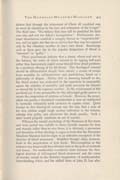
[p. 413]
believe that through the atonement of Christ all mankind may be saved by obedience to the laws and ordinances of the Gospel." The third runs: "We believe that men will be punished for their own sins and not for Adam's transgression." Furthermore, doctrinal dissertations establish a category known as "unpardonable" sins, and yet again sins that are so serious that they may be expiated only by the voluntary sacrifice of one's own blood. Reasonings such as these gave rise to the popular designation of blood as "innocent" or "guilty."
These preachments indicate that a sinner, whose soul was in the balance, the scales of which seemed to be tipping hell-ward rather than heavenward, might rescue himself from dread perdition by a sacrificial offering of his life-blood. This theological concept should be differentiated sharply from suicide, a means of escape from mortality by self-destruction and annihilation, based on a philosophy of despair. Notice that in dooming himself to die, the blood atonist was motivated by the aspiration to measurably square the mistakes of mortality, and make provision for futurity or eternal life by the supreme sacrifice. In the achievement of this sacrificial act, it was permissible for the self-judged guilty person to secure the cooperation of relatives or friends. However, the proposition was purely a theoretical consideration as men are indisposed to surrender voluntarily earth existence to expiate crime. Quite foreign to this theological concept was the idea that a man of his own volition might weigh another individual in the balance, adjudge him guilty, and administer the death penalty. Such a deed would properly constitute an act of murder.
Whereas the mental psychology of the Mormons of this storm and stress period was verbally to damn Gentile enemies for time and eternity rather than to save them, it is obviously a perversion and distortion of their theology to argue or insist that the Mountain Meadows Massacre had its origin in an orthodox conception of the doctrine of blood atonement. Muddled thought often, however, leads to the perpetration of dark deeds. Misconceptions in this instance may temporarily have blinded some to the path of rectitude and honor. No worth-while correlation exists between the theological doctrine of self-imposed blood atonement and the crime of murder, except in the distorted imagination of hostile-minded, loose-thinking critics, and the addled brain of John D. Lee who,
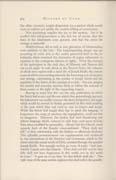
[p. 414]
like other criminals, sought desperately for a pretext which would seem to explain and justify the wanton killing of countrymen.
War psychology supplies the key to the mystery. Let it be recalled that self-preservation is the first law of nature, that the fears of the inhabitants were genuine, and that the desire for revenge is powerful.
Multitudinous old as well as new grievances of Mormondom were suddenly to the fore. The long-impending danger was approaching its crisis, and, as the matter presented itself to the in-habitants, there remained the alternative of supine submission to injustice or the courageous defense of rights. What the memory of the participant in the dark clays of Missouri and Nauvoo did not recall might be read afresh in the Deseret News, the columns of which were replete with a serial life of Joseph Smith, the current issues of which were reciting minutely the harrowing acts of injustice and outrage, culminating in the murder of Joseph Smith and the expulsion of the Saints at the mandate of a mob. One can imagine the mental and muscular reaction likely to follow the reviewal of these scenes in the light of the impending tragedy.
Bearing in mind that this was the only publication to which the Saints had access, and the one which they painstakingly perused, the behaviorist can readily conceive the fierce indignation and anger which would be revived or freshly generated by this vivid recalling of the past which they had tried in vain to forgive and forget. While the Saints had taught their lips to speak the language of forgiveness, the surge of emotion, the regurgitation, could not but be dangerous. Moreover, the leaders had used threatening and defiant language which, reduced to cold type, read more severely than when modified by personality. Always had the Church stood squarely back of the Sinaitic commandment: "Thou shalt not kill," as their relationship with the Indians so effectively discloses. This splendid pronouncement was supplemented and reinforced by the admonitions in the Doctrine and Covenants, which to the Saints were the recent words of Deity, revealed through the prophet Joseph Smith. For example, section 42, verse 8 reads: "And now, behold, I speak unto the Church. Thou shalt not kill; and he that kills shall not have forgiveness in this world, nor in the world to come." It goes on to say that "he that killeth shall die." The 79th verse of the same section explains who shall inflict the penalty.
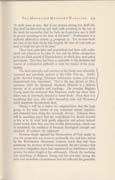
[p. 415]
"It shall come to pass, that if any persons among you shall kill, they shall be delivered up and dealt with according to the law of the land; for remember that he hath no forgiveness, and it shall be proven according to the laws of the land." Furthermore it is explicitly affirmed in section 53, paragraph 21: "Let no man break the laws of the land, for he that keepeth the laws of God bath no need to break the laws of the land."
These basic principles and propositions had been well understood and adhered to by John D. Lee and his fellow conspirators in the pre-Utah period of Church history in which they were active participants. Then they had been as amenable to the dictation and control of ecclesiastical authority as were the masses of the membership.
The basic principles and practices of the Saints were admirably expressed and splendidly realized in the Utah War era. Intelligently directed strategy, Christian forbearance, system, and order characterized every movement. This is the true picture of Mormondom, while the Mountain Meadows Massacre is a hideous travesty of its principles and teachings. On occasion Brigham Young made the statement that Mormons could rise above their fellow-men or conversely descend to lower levels. Even then it is mystifying that men, who called themselves men and Mormons, could perpetrate the infamous deed.
Always it will be a matter for congratulation that the large group, in the main theatre of war, restrained natural impulses, and abstained from doing the seemingly obvious. Likewise there will be unending regret that the insignificant few should descend so low as to do what both public exigencies and private interest would forbid. How then may this terrible phenomenon, which was so completely the antithesis of Mormon theological concepts and standards of conduct, be explained?
However deeply agitated the Mormondom of Utah might be over the prospective war, however profoundly they had been stirred by the Reformation Movement, however much they had been pondering the doctrine of blood atonement, the fact remains that successive emigration trains had experienced no interference while passing the entire length of the settlements. Clearly the teachings and preachings of Brigham Young and his associates during the prior and immediate circumstances had not inflamed the generality
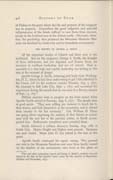
[p. 416]
of Utahns to the point where the life and property of the emigrant was in jeopardy. Everywhere the good judgment and splendid self-possession of the Saints sufficed to save them from excesses, except in the localized area of the distant south. Obviously, therefore, the psychology that produced the Mountain Meadows Massacre was localized in Cedar City and its immediate environment.
THE REPORT OF GEORGE A. SMITH
All the important leaders of Church and State were in the northland. Alas for the emigrants, George A. Smith, the founder of these settlements, had just departed, and Erastus Snow, his successor in southern leadership had not yet arrived. How lamentable it is that high and capable leadership was lacking in this area at the moment of danger.
Apostle George A. Smith, returning post haste from Washington, D. C., where he had been endeavoring to get Utah admitted to the Union, left for the southern country Monday, Aug. 3, 1857. He returned to Salt Lake City, Sept. 1, 1857, and recounted his experiences during the month that he was away in a Bowery sermon of Sept. 13, 1857.3
Military exercises were in progress on the town square when Apostle Smith arrived at Parowan, Aug. 8, 1857. The people were in good spirits. "They were willing any moment to touch fire to their homes, and hide themselves in the mountains, and to defend their country to the last extremity." Col. William H. Dame was going about organizing the military of that district in accordance with the new law of the previous winter, so Smith accompanied him. Enthusiastic receptions were accorded them.
Smith delivered a military discourse Sunday, Aug. 16th at Cedar City. Majors Haight and Higbee were present. Harmony was next visited. Major John D. Lee joined in the tour at this point.
Apostle Smith continued his report, saying: "We pursued our visit to the Mountain Meadows and were there kindly treated by the families of the missionaries, who lived at this place on
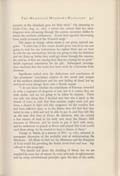
[p. 417]
account of the abundant grass for their stock." On returning to Cedar City, Aug. 21, 1857, a rumor was current that 600 army dragoons were advancing through the eastern mountain defiles to attack the southern settlements. Scouts had reported discovering horse tracks eastward of the Wasatch range.
The major in charge, whose name is not given, seemed sanguine. "I asked him if this rumor should prove true if he was not going to wait for any instructions; he replied there was no time to wait for any instructions; that he was going to take his battalion and use them up before they could get down through the canyons, for, said he, if they are coming here they are coming for no good." Smith expressed admiration for his grit. Subsequent investigations disclosed that the tracks had been made by a horseman from Parowan.
Significant indeed were the deductions and conclusions of this prominent churchman relative to the mood and temper of the southern inhabitants and his own feeling of dread lest an untoward event plunge them into a bloody sequel.
"I do not know whether the inhabitants of Parowan intended to whip a regiment of dragoons or not, but it is certain they are wide awake, and are not going to be taken by surprise. There was only one thing that I dreaded and that was a spirit in the breasts of some to wish that their enemies might come and give them a chance to fight and take vengeance for the cruelties that had been inflicted upon us in the States; they did feel that they hated to owe a debt and not be able to pay it, and they felt like an old man that lives at Provo, Br. Jameson, who has carried a few ounces of lead in his body ever since the Haun's Mill massacre in Missouri, and he wants to pay it back with usury, and he undertook to preach at Provo and prayed that God would send them along, for he wanted to have a chance at them."
George A. Smith, in a sermon of Nov. 15, 1857, adverted to newspaper discussion of the probable cost of exterminating the Mormons. All efforts to blot out the Mormons and the Kingdom of God would fail providing the Saints stood tried and true. Significant is this paragraph:
"We should not desire the shedding of blood, but we are required by every law of nature, by every principle of righteousness and by every constitutional principle upon the face of the earth,
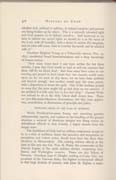
[p. 418]
whether civil, political or military, to defend ourselves and prevent our being broken up by others. This is a naturally inherited right and God requires us to defend ourselves. And inasmuch as we have to defend our sacred rights we should do it in the name of the Lord, with all humility, with a desire to sustain His kingdom, and let what will come, trust in God for the result, and be satisfied with it."
President Brigham Young in a Tabernacle sermon, Nov. 15, 1857, manifested broad humanitarianism and a deep knowledge of human nature:
"How many times have I said here, within the last three months, I pray that God would so lead us and our enemies that there will be no blood shed. And how many have come to our meeting and prayed in their hearts that 'our enemies would come upon us, for we want to slay them, for we have been mobbed and hunted enough,' and another would pray the same prayer, with a disposition to desire the spoil. One of the brethren prayed in camp that the snow might fall 40 feet deep on our enemies. I am satisfied if it falls only four or five feet deep." General Wells was advised to do as the Holy Ghost shall dictate him. These are post-Mountain-Meadows dissertations, but they have application, nevertheless, as illustrations of principle and policy.
PROBABLE ORIGIN OF THE PLAN OF MASSACRE
While President-Governor Young was exercising genuine statesmanship, sagacity, and caution in the handling of the general situation, a network of disastrous intrigue was being woven by subordinate officials in Iron County, a region remote from the danger zone.
The Southland of Utah had no military assignment, except to be in a state of readiness, hence the incentive and temptation to precipitous and violent action should have been less there than elsewhere in Mormondom. The ranking military official at the time in this area was Col. Wm. H. Dame, the commander of the Nauvoo Legion in the ninth military district, comprising Iron, Beaver, and Washington counties. Dame was also bishop of Parowan. President Isaac C. Haight, residing at Cedar City, was president of the Parowan Stake, the highest ecclesiastical official in that large division of country, with John M. Higbee, a major
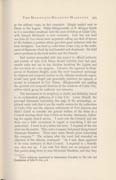
[p. 419]
in the military corps, as first counselor. Haight ranked next to Dame in the Legion. Philip Klingensmith, or P. Klingen Smith as it is sometimes rendered, held the post of bishop at Cedar City, with Samuel McMurdy as first counselor. Last but not least was John D. Lee whose most important calling was that of farmer to the Indians, a position which gave him great influence with the local aborigines. Lee lived 50 miles from Cedar City, at the settlement of Harmony which he had founded and christened. He held minor positions in the local militia and the Church.
Had matters proceeded with due respect to official authority and priority of rank, Col. Dame should certainly have had paramount voice and say in any decision involving the Legion and the execution of a war program. Likewise, the approval or disapproval of President Haight, easily the most important personage in religious and temporal matters in the selfsame territorial region, would carry great weight and powerfully reinforce his opinion as second in command to Col. Dame. Klingensmith was guiding the spiritual and temporal destinies of the residents of Cedar City, within which group his authority was extensive.
The movement in its incipiency is clearly and definitely traced to an ecclesiastical gathering at Cedar City. Laban Morrill, the principal informant concerning this stage of the proceedings, explained under oath that it was the weekly custom for the authorities of Cedar City and the adjacent settlements of Fort Johnson and Shirt's Creek to consider the general welfare of the three at a Council meeting about four o'clock on Sunday afternoons, following the regular church service. "I went into the Council, and saw there was a little excitement in regard to something I did not understand. I went in at a rather late hour. I inquired of the rest what was the matter. They said a company had passed along toward Mountain Meadows. There were many threats given concerning this company."4 The witness, after the court had overruled an objection of the defense, continued: "As I said, there appeared to be some confusion in that Council. I inquired in a friendly way what was up. I was told that there was an emigrant train that passed along down to near Mountain Meadows, and that they
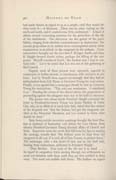
[p. 420]
had made threats in regard to us as a people—said they would destroy every d—d Mormon. There was an army coming on the south and north, and it created some little excitement." A kind of debate ensued concerning measures for the protection of the life of the inhabitants. The discussion ran the gamut of the possibilities, ranging from absolute noninterference to destruction. The murder proposition in its mildest form contemplated merely white acquiescence in an attack on the emigrants by the redmen. Cross-examination brought out the fact that P. Klingen Smith and Isaac B. Haight favored drastic action, perhaps the killing of the emigrants. Morrill considered Smith "the hardest man I had to contend with." Let it be noted that Lee was not at this gathering of the Council.
Happily most of those present were vigorously opposed to connivance at Indian atrocity or interference with wayfarers in any form. Led by Morrill these argued convincingly that they had no authorization from Col. Dame or Governor Young for overt action. Finally, it was agreed that a messenger should be sent to Governor Young for instructions. "The vote was unanimous. I considered it so." Pending the return of the official advice, the proposition of proceeding against the emigrant train was to be held in abeyance.
The person into whose hands President Haight entrusted the letter to President-Governor Young was James Haslam of Cedar City, who, in an affidavit of much later date, stated that the content of the despatch was "that the Indians had got the emigrants coralled at the Mountain Meadows, and Lee wanted to know what should be done."
Sixty hours astride successive mustangs brought the tired Haslam at daybreak of September l0th before the Lion House, from whence President-Governor Young directed affairs of Church and State. Impressive were the words that fell from his lips on reading the message, namely that "the Indians must be kept from the emigrants at all cost, if it took all of Iron County to protect them." The messenger, after a few hours of rest, was on the back trail, bearing these instructions, addressed to President Haight:
"Dear Brother. Your note of the 7th inst is to hand . . . . In regard to emigration trains passing through our settlements we must not interfere with them until they are first notified to keep away. You must not meddle with them. The Indians we expect
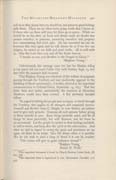
[p. 421]
will do as they please but you should try and preserve good feelings with them. There are no other trains going south that I know of. If those who arc there will leave let them go in peace. While we should be on the alert, on hand and always ready we should also possess ourselves in patience, preserving ourselves and property ever remembering that God rules. He has overruled for our deliverance this once again and he will always do so if we live our religion, be united in our faith and good works. All is well with us. May the Lord bless you and all the Saints forever.
"I remain as ever your Brother in the Gospel of Christ."5
"Brigham Young."
Unfortunately this message came too late for Haslam riding at top speed did not reach Cedar City until Sunday, Sept. 15, two days after the massacre had occurred.
That Brigham Young was solicitous of the welfare of emigrants passing through the Territory and was unalterably opposed to the shedding of blood unnecessarily, is further attested in his important communication to Colonel Dame, September 14, 1857. Had this letter been sent earlier, undoubtedly the massacre at Mountain Meadows would have been averted. A few pertinent excerpts follow:
"In regard to letting the people pass or repass, or travel through the Territory, this applies to all strangers and suspected persons. Yourself and Brother Isaac C. Haight, in your district, are authorized to give such permits. Examine all such persons before giving to them permits to pass. Keep things perfectly quiet, and let all things be done peacefully, but with firmness, and let there be no excitement. Let the people be united in their feelings and faith, as well as works, and keep alive the spirit of the reformation. And what we said in regard to saving the grain and provisions we say again, let there be no waste. Save life always when it is possible. We do not wish to shed a drop of blood if it can be avoided.
"This course will give us great influence abroad."6
"Brigham Young,
Daniel H. Wells."
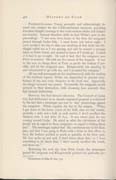
[p. 422]
President-Governor Young promptly and unhesitatingly insured safe conduct for the California-bound wayfarers, providing President Haight's message to the south-western whites and Indians was heeded. Interest therefore shifts to Joel White's part in the proceedings. "I was away from home at the time the emigrants passed through Cedar City. I came home just before night. I can't recollect the day or date, nor anything of that kind; but Mr, Haight called me as I was passing, and said he wanted a message taken to Pinto Creek, and wanted to know if I would go. I asked if it had to go to-night. He said it had, that the emigrants pass Pinto to-morrow. He told me the nature of the dispatch. It was to the man in charge there at Pinto to pacify the Indians if possible, and let the emigrants pass. Klingensmith was standing by and volunteered to go with me, and I accepted his company."
All was well presumptively for simultaneously with the sending of the northern express, White was despatched to prevent interference of any and every character in the local area. Apparently the danger moment was passed. Presumably the emigrants would proceed to their destination, little dreaming how narrowly they had escaped destruction.
However, fate had decreed otherwise. The Council at Cedar City had deliberated on an already originated proposal as evidenced by the fact that a messenger was sent to "stay" proceedings against the emigrants. White supplies the key to the enigma. "When I got down to the lower corner of the field, after we had started, probably a mile and a half, or such matter, I don't recollect the distance now, I met John D. Lee. It was about dark; he was coming toward Cedar. He asked us what the calculation of the people was in regard to those emigrants—in regard to letting them pass." The messenger replied that "the conclusion was to let them pass, and that I was going to Pinto with a letter to that effect, to have the Indians pacified as much as possible, to let them pass. Mr. Lee spoke up and said, 'I don't know about that,' or 'I have something to do about that,' I don't exactly recollect the words, and drove on."7
Returning the next day from Pinto Creek, the messengers passed the emigrants and Klingensmith pointed out particular per-
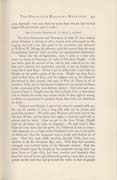
[p. 423]
sons, especially "one man that had made these threats that he had helped kill Joe Smith, and so forth."
THE ALLEGED COMPLICITY OF ISAAC C. HAIGHT
The Last Confession and Statement of John D. Lee, written at his dictation in March of 1877, twenty years subsequent to the tragedy and just a few days prior to his execution, and delivered to William W. Bishop, his attorney; with the request that the same be published, includes these accusing but unsupported statements:
"About the 7th of September, 1857, I went to Cedar City from my home at Harmony, by order of President Haight. I did not know what he wanted of me, but he had ordered me to visit him and I obeyed. If I remember correctly, it was on Sunday evening that I went there. When I got to Cedar City, I met Isaac C. Haight on the public square of the town. Haight was then President of that Stake of Zion, and the highest man in the Mormon Priesthood in that country, and next to Wm. H. Dame in all of Southern Utah, and as Lieutenant Colonel he was second to Wm. H. Dame in the command of the Iron Military district. The word and command of Isaac C. Haight were the law in Cedar City, at that time, and to disobey his orders was certain death; be they right or wrong, no Saint was permitted to question them, their duty was obedience or death.
"When I met Haight, I asked him what he wanted with me. He said he wanted to have a long talk with me on private and particular business. We took some blankets and went over to the old Iron Works, and lay there that night, so that we could talk in private and in safety. After we got to the Iron Works, Haight told me all about the train of emigrants. He said (and I then believed every word that he spoke, for I believed it was an impossible thing for one so high in the Priesthood as he was, to be guilty of falsehood) that the emigrants were a rough and abusive set of men. That they had, while traveling through Utah, been very abusive to all the Mormons they met. That they had insulted, outraged, and ravished many of the Mormon women. That the abuses heaped upon the people by the emigrants during their trip from Provo to Cedar City, had been constant and shameful; that they had burned fences and destroyed growing crops; that at many points on the road they had poisoned the water, so that all people

[p. 424]
and stock that drank of the water became sick, and many had died from the effects of poison. That these vile Gentiles publicly pro-claimed that they had the very pistol with which the Prophet Joseph Smith, was murdered, and had threatened to kill Brigham Young and all of the Apostles. That when in Cedar City they said they would have friends in Utah who would hang Brigham Young by the neck until he was dead, before snow fell again in the Territory. They also said that Johnston was coming, with his army, from the East, and they were going to return from California with soldiers, as soon as possible, and would then desolate the land, and kill every d—d Mormon man, woman and child that they could find in Utah. That they violated the ordinances of the town of Cedar City, and had, by armed force, resisted the officers who tried to arrest them for violating the law. That after leaving Cedar City the emigrants camped by the company, or cooperative field, just below Cedar City, and burned a large portion of the fencing, leaving the crops open to the large herds of stock in the surrounding country. Also that they had given poisoned meat to the Corn Creek tribe of Indians, which had killed several of them, and their Chief, Kanosh, was on the trail of the emigrants, and would soon attack them. All of these things, and much more of a like kind, Haight told me as we lay in the dark at the old Iron Works. I believed all that he said, and, thinking that he had full right to do all that he wanted to do, I was easily induced to follow his instructions.
"Haight said that unless something was done to prevent it, the emigrants would carry out their threats and rob every one of the outlying settlements in the South, and that the whole Mormon people were liable to be butchered by the troops that the emigrants would bring back with them from California. I was then told that the Council had held a meeting that day, to consider the matter, and that it was decided by authorities to arm the Indians, give them provisions and ammunition, and send them after the emigrants, and have the Indians give them a brush, and if they killed part or all of them, so much the better.
"I said, `Brother Haight, who is your authority for acting in this way.'?
"He replied, `It is the will of all in authority. The emigrants have no pass from any one to go through the country, and they are
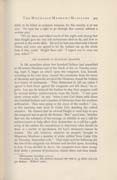
[p. 425]
liable to be killed as common enemies, for the country is at war now. No man has a right to go through this country without a written pass.'
"We lay there and talked much of the night, and during that time Haight gave me very full instructions what to do, and how to proceed in the whole affair. He said he had consulted with Colonel Wm. H. Dame, and every one agreed to let the Indians use up the whole train if they could. Haight then said: `I expect you to carry out your orders.'"8
THE MASSACRE AT MOUNTAIN MEADOWS
In the meantime about two hundred Indians had assembled at Mountain Meadows and at the break of day on Tuesday morning, Sept. 8, began an attack upon the emigrants. Lee, himself, according to his own story, crossed the mountains from his home at Harmony and upon his arrival at the Meadows, found the Indians in a frenzy of excitement. "They threatened to kill me unless I agreed to lead them against the emigrants and kill them," he re-ports. Lee says be induced the Indians to stay their purpose, until he secured further reinforcements from the South. "I had gone about sixteen miles," he says, "when I met Carl Shirts with about one hundred Indians and a number of Mormons from the southern settlements. They were going to the scene of the conflict." Lee, at this juncture, sent word to Cedar City detailing the critical situation. He claimed that he advised Haight to send help to save the emigrants and to pacify the Indians. "But," says Greer, "whether that was the substance of his message, or whether it was a call for reinforcements to help effect their destruction, or a call for a gathering of the settlers for consultation to determine what should be done, is a matter of speculation, for Lee's statement cannot be trusted. The call, however, whatever its purport, brought to Mountain Meadows a number of white settlers9 from Cedar City on Thursday, September 10th." That night and the following day the fate of the emigrants was debated and decided upon. According to Lee, it was decided to decoy, the emigrants from their strong-hold under a promise of protection, disarm them and then treach-
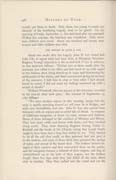
[p. 426]
erously put them to death. Only those, too young to retain any memory of the horrifying tragedy, were to be spared. On the morning of Friday, September 11, this diabolical plan was executed. Within five minutes, the butchery was completed. Only seventeen children were saved. About one hundred and twenty men, women and older children were slain.
THE REPORT OF JOHN D. LEE
About two weeks after the tragedy, John D. Lee visited Salt Lake City to report what had been done at Mountain Meadows. Brigham Young's deposition at the second trial of Lee in reference to this interview follows: "Within two or three weeks after the massacre, Lee called at my office and had much to say with regard to the Indians, their being stirred up to anger and threatening the settlements of the whites, and then commenced giving an account of the massacre. I told him to stop as from what I had already heard by rumor, I did not want my feelings harrowed up with a recital of details."
Wilford Woodruff, who was present at this interview, recorded in his journal what took place. His account of September 29, 1857 follows:
"We have another express in this morning, saying that the army is rapidly marching toward us, will soon be at Bridger, and wish men immediately sent out. John D. Lee also arrived from Harmony with an express and an awful tale of blood. A company of California emigrants, of about 150 men, women and children. Many of them belonged to the mobbers of Missouri and Illinois. They had many cattle and horses with them, and they traveled along south. They went damning Brigham Young, Heber C. Kimball and the heads of the Church; saying that Joseph Smith ought to have been shot a long time before he was. They wanted to do all the evil they could, so they poisoned beef and gave it to the Indians, and some of them died; they poisoned the springs of water, and several of the Saints died. The Indians became enraged at their conduct and they surrounded them on the prairie, and the emigrants formed a bulwark of their wagons, and dug an entrenchment up to the hubs of their wagons, but the Indians fought them five days until they had killed all the men, about sixty in number. They then rushed into the corral and cut the

[p. 427]
throats of the women and children, except some eight or ten children which they brought and sold to the whites. They stripped the men and women naked and left them stinking in the sun. When Brother Lee found it out be took some men and went and buried their bodies. It was a horrid, awful job. The whole air was filled with an awful stench. The Indians obtained all the cattle and horses and property, guns, etc. There was another large company of emigrants who had 1,000 head of cattle, who was also damning both the Indians and the `Mormons.' They were afraid of sharing the same fate. Brother Lee had to send interpreters with them to the Indians to help save their lives, while at the same time they were trying to kill us. I spent most of the day in trying to get the brethren ready to go to the mountains. Brother Brigham, while Lee was speaking of the cutting of the throats of women and children by the Indians down south, said it was heart-rending; that emigration must stop, as he had said before. Brother Lee said he did not think there was a drop of innocent blood in the camp, for he had two of the children in his house, and be could not get but one to kneel down in prayer-time, and the other would laugh at her for doing it, and they would swear like pirates."
In a sworn statement before Nephi Clayton, notary public of Salt Lake County, on October 24, 1884, Wilford Woodruff declared that Lee did not intimate by a single word that any white man had anything whatever to do with the massacre and emphasized the fact that "lie laid the whole thing to the Indians and claimed be had done his best to prevent the occurrence." On Oct. 23 of the same year, Aaron Farr of Ogden appeared before E. H. Anderson, notary public of Weber County and made the following deposition:
"I was personally acquainted with John D. Lee, having known him when a boy in Nauvoo. In the fall of 1857, he came to Salt Lake City from his home in Iron County, shortly after the massacre to report to Brigham Young how it occurred. On the same day that be reported to President Young in the morning, be came to my residence on West Temple Street, opposite Bishop Hunter's place, in the afternoon, and in a conversation with me, lasting about an hour and a half, detailed every particular of the horrible occurrence. He placed the whole blame of the massacre on the Indians. He stated that he and his associates had done all in their
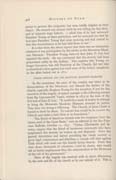
[p. 428]
power to protect the emigrants, but were totally helpless in their object. He seemed very earnest while he was telling me this story, and at intervals wept bitterly. I asked him if he had informed President Young of these particulars, and he answered me that he had seen President Young that same morning and had related to him the circumstances as he had told them to me.'"
It is clear from the above reports that there was no intimation whatever of any participation by the whites in the Mountain Meadows Massacre. President Young believed that John D. Lee had reported the truth. He was convinced that the atrocity had been perpetrated solely by the Indians. This explains why Young, no longer Governor, but still President of the Church, did not take ecclesiastical action against Lee until news of the latter's complicity in the affair leaked out in 1870.
PUBLIC OPINION AND THE MOUNTAIN MEADOWS MASSACRE
In the meantime, the press of the country was bitter in its denunciations of the Mormons, and blamed the leaders of the church, especially Brigham Young for the inception if not for the execution of the tragedy. A typical example is the following excerpt from the Leavenworth Times, written in 1875 at the time of the first trial of John D. Lee: "It would be a waste of money to attempt to bring the Mountain Meadows Massacre assassins to justice. They have too strong a following. The Church of Jesus Christ is bound to stand by them. To convict Lee would be to convict the Church and strike a fatal blow at its foundation."
"The blood of American citizens cries for vengeance from the barren sand of the Great Basin," runs an editorial in the San Francisco Bulletin, October 12, 1857. "Virtue, Christianity and decency, require that the blood of incestuous miscreants who have perpetrated this atrocity be broken up and dispersed. Once the general detestation and hatred pervading the whole country is given legal countenance and direction, a crusade will start against Utah which will crush out this beastly heresy forever. From this state alone, thousands of volunteers could be drawn, who would ask no better employment than the extermination of the Mormons at the call of the government."
News of the tragedy was received with as much abhorrence by the rank and file of the church as by any outside of it. This is
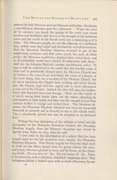
[p. 429]
attested by both Mormon and non-Mormon authorities. Stenhouse, a non-Mormon historian pens this statement: "When the news of the massacre was heard, the people of the north were terror stricken and shuddered with horror at the thought of the barbarous crime and the recital of the bloody work was as harrowing as it is today. The Mormon people are not the offspring of a barbarous race, neither were they raised and nurtured in uncivilized nations. Had the Mountain Meadows Massacre occurred in any of the neighboring territories and that crime clearly the work of white people, the Mormons would have despised them, hated them, and in all probability would have refused all intercourse with them." And says the historian Bancroft, another non-Mormon writer: "It may as well be understood at the outset that this horrible crime so often and so persistently charged upon the Mormon Church and its leaders is the crime of an individual, the crime of a fanatic of the worst stamp, who was a member of the Mormon Church, but of whose intentions the Church knew nothing, and whose bloody acts, the Church, high and low, regard with as much abhorrence as any out of the Church. Instead, the blow fell upon the brother-hood with threefold force and damage. There was the cruelty of it which wrung their hearts; there was the odium attending its performance in their midst; and there was the strength it lent their enemies further to malign and molest them. The Mormons denounce the Mountain Meadows Massacre and every act connected therewith as earnestly and as honestly as any in the outside world. This is abundantly proved and may be accepted as an historical fact."
Perhaps the best description of the attitude of mind and the sentiments of the Mormons themselves towards the Mountain Meadows tragedy, from the Mormon viewpoint, was voiced by Apostle John Taylor in 1874, when he said:
"I now come to the investigation of a subject that has been harped upon for the last seventeen years, namely, the Mountain Meadows Massacre. That bloody tragedy has been the chief stock in trade for the above named time for penny-a-liners, the press, and pulpit, who have gloated in turns, and by drones, in the sickening details. Do you deny it? No. Do you excuse it? No. There is no excuse for such a relentless, diabolical, sanguinary deed. That outrageous infamy is looked upon with as much abhorrence by our
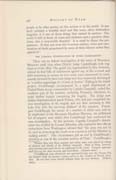
[p. 430]
people as by other parties, in this section or in the world. It was most certainly a horrible deed and like many other defenseless tragedies, it is one of those things that cannot be undone. The world is full of deeds of crime and darkness; and a question often arises, who is responsible therefor? It is usual to blame the perpetrators. It does not seem fair to accuse nations, states and communities of deeds perpetrated by some of their citizens unless they uphold it."
THE JUDICIAL INVESTIGATION OF JUDGE CRADELBAUGH
There was no federal investigation of the crime of Mountain Meadows until 1859 when District Judge Cradelbaugh took cognizance of the affair. The grand jury impannelled by him, however, refused to find bills of indictment against any of the accused and after remaining in session for two weeks were summoned to court, soundly lectured by their irate Judge and then summarily discharged as "a useless appendage of a Court of Justice." Failing in his initial project, Cradelbaugh, accompanied by a small detachment of United States troops commanded by Captain Campbell, visited the southern part of the territory, including Mountain Meadows, to make further inquiry concerning the tragedy. The Judge met Indian Superintendent Jacob Forney, who had just completed his own investigation of the tragedy and was then returning to Salt Lake City with the surviving children10 of the massacre. Forney gave Cradelbaugh the names of a number of white men said to be implicated in the Mountain Meadows Massacre. An additional list of suspects were added after Cradelbaugh had conducted his own investigation. At this juncture, Captain Campbell's detachment was recalled by General Johnston, who explained that official instructions from Washington advised that "the army was not to be used in protecting the courts or as a posse to aid the Marshal in making arrests." This circumstance put an end to Cradelbaugh's activities as one of the associate justices of Utah.11 Cradelbaugh's
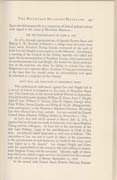
[p. 431]
fiasco also led temporarily to a suspension of federal judicial activity with regard to the crime at Mountain Meadows.
THE EXCOMMUNICATION OF JOHN D. LEE
In 1870, through representations of Apostle Erastus Snow and Bishop L. W. Roundy of Kannara, a village some ten miles from Lee's ranch, President Young became convinced of the guilt of both Lee and Haight as accomplices in the Massacre. Accordingly, a meeting of the Council of the Twelve Apostles was called and upon the recommendation of President Young, voted unanimously to excommunicate Lee and Haight, the former for direct participation in the massacre, the latter for failure to restrain Lee, since Haight was Lee's superior officer. President Young gave instructions at the time that Lee should tinder no circumstances ever again be admitted as a member of the Church.
LEES TRIAL AND EXECUTION AT MONUMENT POINT
This ecclesiastical indictment against Lee and Haight led to a revival of federal investigation in the crime of Mountain Meadows. The Grand Jury in the Second Judicial District in September, 1874 filed indictments charging William H. Dame, Isaac C. Haight, John D. Lee, William C. Stewart, John H. Higbee, George Adair, Eliot Wilder, Samuel Jewkes and Philip K. Smith (Klingensmith) with participation in the Mountain Meadows Massacre. All except Lee were released later from custody. Lee was arrested by Deputy United States Marshal, William Stokes on November 7, 1874.
At Lee's first trial which opened at Beaver, July 12, 1875, it appears that an attempt was made to fasten the crime upon Brigham Young and his colleagues. At least this is the conclusion of the Salt Lake Tribune, organ of the anti-Mormons in Utah at this time. An editorial, dated September 9, 1876 runs as follows: "The conviction of Lee was not so much an object of the prosecution as the procurement of such testimony as would fix the crime upon men higher up in the church." Lee charged Haight and Wm. H. Dame with the responsibility of the massacre but said nothing to incriminate Brigham Young and his associates. The jury, eight of whom were Mormons, failed to agree and Lee was bound over for a second trial which commenced at Beaver, September 13, 1876.
In the second trial, United States District Attorney Sumner
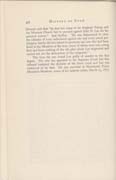
[p. 432]
Howard said that "he had not come to try Brigham Young and the Mormon Church but to proceed against John D. Lee for his personal actions." And further: "He was determined to clear the calendar of every indictment against any and every actual participator, but he did not intend to prosecute any one who had been lured to the Meadows at the time, many of whom were only young boys and knew nothing of the vile plan which Lee originated and carried out, for the destruction of the emigrants."
This time the jury found Lee guilty of murder in the first degree. The case was appealed to the Supreme Court but this tribunal sustained the decision of the lower court and Lee was sentenced to be shot. He was executed at Monument Point, Mountain Meadows, scene of his heinous crime, March 23, 1877.